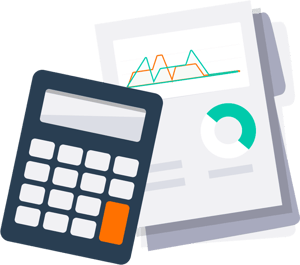Originally published on June 5, 2024, updated February 20, 2025
Menu
Join Our Email List
- Receive our monthly newsletter.
- Stay up to date on Amazon policies.
- Get tips to grow your business.
No one likes returning products: not the customer, not Amazon, and especially not Amazon sellers. But starting this summer, Amazon FBA sellers have more reasons to be wary of returns. Amazon is once again updating its fee structure for FBA users, with extra fees for returns over a certain amount.
So how does the Amazon returns processing fee work? How is it calculated and what can you do to avoid them? Let's take a closer look at what FBA sellers need to know.
 Effective June 1, 2024, Amazon's new returns fee charges FBA sellers an extra amount for returns. This fee is calculated based on the product's monthly return rate, plus category, size, and weight (you can read specific details in the next section). The return rate is the percentage of shipped units in a given month returned over that month and the subsequent two calendar months. The return processing fee will be charged between the 7th and 15th of the third subsequent month.
Effective June 1, 2024, Amazon's new returns fee charges FBA sellers an extra amount for returns. This fee is calculated based on the product's monthly return rate, plus category, size, and weight (you can read specific details in the next section). The return rate is the percentage of shipped units in a given month returned over that month and the subsequent two calendar months. The return processing fee will be charged between the 7th and 15th of the third subsequent month.
Luckily, there are some exceptions to Amazon's new returns fees. Namely, products in Apparel and Shoes — the two most common for returns due to sizing issues — are exempt. If an individual product ships less than 25 units per month, it too is exempt. Finally, products in the New Selection program are exempt for the first 20 returns after the listed threshold.
 Analyze FBA Fees and Returns
Analyze FBA Fees and Returns
Amazon's recent returns processing fees are calculated with four different factors:
The returns rate threshold can get confusing, so let's break it down with an example. Let's say you sell 100 watches in June. By the end of August, thirteen of those watches have been returned. The return rate threshold for watches is 12%, which covers the first twelve of the thirteen returns. That means the seller is only charged a returns processing fee for one watch, based on its weight and size.
Different product categories have different threshold percentages. You can view the entire list for American merchants in Seller Central. To give you a heads-up, here are some of the categories with the lowest (most at-risk) threshold percentages:
Check the thresholds of your top product categories to see how you will be affected by the new Amazon returns processing fee. Product categories that are not listed or products that don't fit into the common categories — the "everything else" category — have a threshold of 4.8%.
Related Reading: How to Analyze FBA Return Reasons and Improve Performance
To help FBA sellers keep returns as low as possible and reduce the returns processing fee, Amazon has added a few improvements to the Return Insights dashboard on the FBA Returns page in Seller Central (under the Inventory tab).
Specifically, new additions include:
The FBA Returns page is updated three times a week and accounts for the entire month's returns, with an option to view past returns.
You can explore FBA return reasons and trends over the past 90 days further with SellerPulse by eComEngine. The FBA Returns report provides high-level insights to help you determine whether you need to change your product, listing, or supply chain to reduce future returns. You can get a weekly overview of recent returns via email for easy monitoring.
Analyze FBA fees with detailed insights including fees by product, type, and time. Find out which products are being charged the returns processing fee and dig into return reasons and customer comments to determine how to reduce returns.
Naturally, the new Amazon returns processing fee should motivate you to reduce your return rates. Although some returns are unavoidable, others are not. The best defense against Amazon's return fees is understanding what makes customers return products and taking preventative action against future returns.
First, you want to address technical issues. For example, if you have returns caused by quality defects, you might want to remove those products from your lineup altogether. If customers complain that the product is not how it appeared online, you can update your product photos and videos.
If returns are caused by people who don't understand how to use or misuse the product, you could add more detailed instructions to the product page. An instructional video demonstrating how to access certain features can also do wonders, as it's easier to show how something works rather than explain it in text.
Last, customer service can go a long way in reducing returns. If you communicate promptly and sympathetically with customers, you can address their problems and sometimes remove the need for a return altogether. Misunderstandings cause some returns, so extra communication can effectively clear things up.
Originally published on June 5, 2024, updated February 20, 2025
This post is accurate as of the date of publication. Some features and information may have changed due to product updates or Amazon policy changes.
These Stories on Amazon
14321 Winter Breeze Drive
Suite 121 Midlothian, VA 23113
Call us: 800-757-6840





Copyright© 2007-2025 eComEngine, LLC. All Rights Reserved. eComEngine®, FeedbackFive®, RestockPro®, and SellerPulse® are trademarks or registered trademarks of eComEngine, LLC. Amazon's trademark is used under license from Amazon.com, Inc. or its affiliates.
No Comments Yet
Let us know what you think